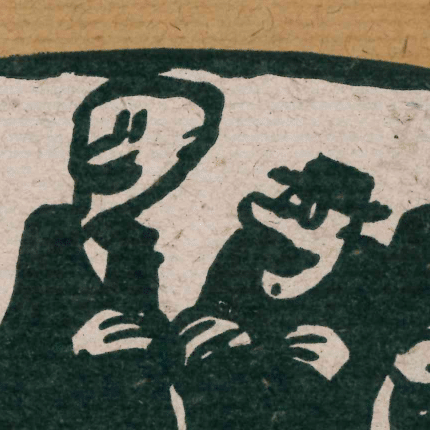The Distance of Closeness
Viennese, traditional Austrian
The Closeness of Distance
Intercultural
Johann Strauss Monument, Vienna
Vienna dedicated a gilded statue to its “waltz king” Johann Strauss (junior); it has become one of the city’s most popular monuments today. Friedrich Cerha grew up with the popular music of the nineteenth century, which was influenced by the Strauss dynasty, carrying these melodies and rhythms within him throughout his life.
Image source: Dennis Jarvis/Wikimedia

Friedrich Cerha with violin, Vienna 1935
Zugang
In the time before the war, I was considered quite a good violinist for my young age in the provincial bourgeois music scene of the Vienna suburb of Hernals: I played at Klein, Sima, and Gschwandtner—usually together with adults—waltzes, polkas, Viennese Lieder, operetta pieces, and, as part of “academies”, classical overtures. In January of 1938, a series of waltzes modelled on Lanner was put together for the ball season at Gschwandtner, with the classical instrumentation of two violins, viola, and a double bass. It was never performed: two months later the Nazis arrived, and my childhood world was plunged forever into darkness.
Friedrich Cerha
Schriften: ein Netzwerk, Vienna 2001, p. 216
The “Austrian” aspects of Cerha’s music are, indeed, among its strongest traits, founded on his appreciation of the Viennese School and its “musical ethics”Peter Baier, “Kontrapunkt unter der Schulbank. Wird am Samstag 70: Gespräch mit dem Komponisten Friedrich Cerha”, Münchner Merkur, No. 39, 16Feb1996. Cerha is connected to Arnold Schönberg, Alban Berg, and Anton von Webern, as well as Gustav Mahler and Franz Schubert, by a similar way of feeling and thinking that he himself finds difficult to describe. This sense he alludes to is neither a narrow focus on homeland, nor on a national musical identity such as the Russian “Mighty Five”, nor like that of ethnologically focussed composers such as Béla Bartók. Rather, the focus is on how “the experience is not quite the same when one chooses to enter into an intellectual sphere as when one is born into it.”Schriften – ein Netzwerk, Vienna 2001, p. 173
Cerha’s first work, Gschwandtner Tänze, is testament to this, as is the first Langegger Nachtmusik, which is brought to life through its diverse associations with Austrian musical history, as well as his poetic, black-humoured, deeply vernacular Keintaten.
Werke zum Themenfeld
Süße Erinnerungen
Gschwandtner Tänze, 1938
Komponierte Umwelt
Langegger Nachtmusik I, 1969
A leich aum otagringa friidhof
I. Keintate 1980/82



